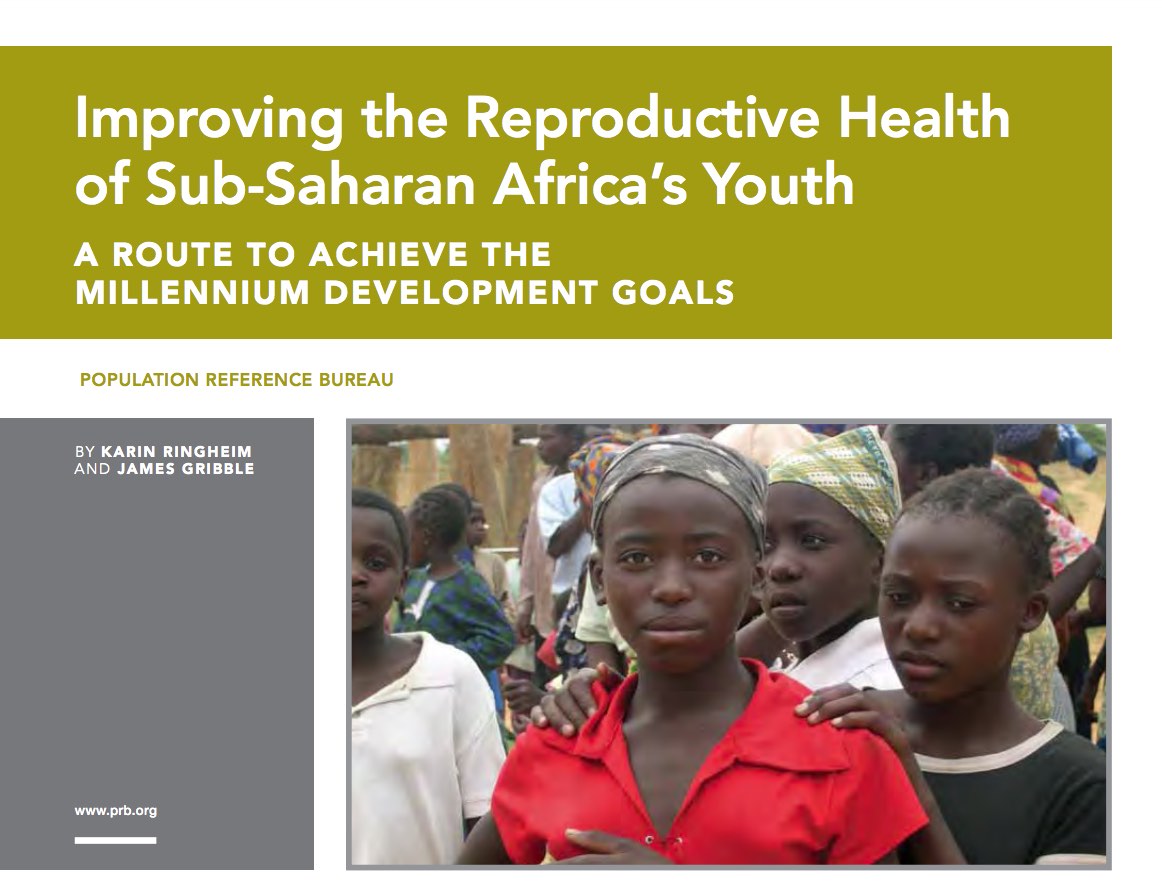
Improving the Reproductive Health of Sub-Saharan Africa's Youth
Date
June 1, 2010
Author
- This report also in French.
(June 2010) As the fastest-growing region in the world, sub-Saharan Africa is confronting many of the greatest global health and development challenges. With a population of more than 840 million, and growing at the rate of 2.4 percent per year, sub-Saharan Africa will double in size in just 30 years. Half the population in these countries is younger than 18. It is widely accepted that the future of sub-Saharan Africa rests to a great extent on the investments made in the education, health, and employment opportunities of its youth and on how successfully its youth transition to a healthy and productive adulthood.1
Achieving the Millennium Development Goals
In 2000, 189 of the world’s countries committed to reducing poverty and many of its associated factors through the achievement of eight Millennium Development Goals (MDGs). Each goal has specific targets and indicators to be achieved by 2015, many of which relate to youth. With just five years remaining in this 20-year plan, far greater attention to the educational and health needs of the world’s giant generation of youth is needed, especially in sub-Saharan Africa, which is facing the highest hurdles in meeting the MDGs.
Although youth around the world share many similarities, the experience of being a young woman or man is as diverse as the cultures from which young people come. In the West African country of Mali, a young woman is very likely to have experienced female genital cutting by age 5. She may never have attended school. She is likely to be married and have a child by age 16, and to believe that her husband is justified in beating her for certain “transgressions.” In southern Africa, a young Zambian woman is more likely to have gone to school, but has few job opportunities and has among the world’s highest risks of becoming infected with HIV. By contrast, a young woman in the East African country of Rwanda is the most likely of the three girls to be educated and the least likely to be sexually active, married, or have a child. She may have a boyfriend, but she is less likely to have a pregnancy during adolescence than is a girl in the United States. She is only one-tenth as likely to be HIV positive as a girl in Zambia.
These three young women have very different experiences, but they share common dreams and ambitions about health, family, and work. With government investments in health, education, and job opportunities, and political commitments to the aspirations of the Millennium Development Goals, these young women—a part of the more than 1.2 billion young people around the world—have a chance to realize their personal goals and help their nations achieve higher levels of economic and social development.* These efforts will spur progress on the many MDG outcomes that directly or indirectly concern youth.2
*This chartbook focuses on youth ages 15 to 19. The world’s youth population of 1.2 billion as defined by the United Nations refers to ages 15 to 24.
Karin Ringheim is a senior policy adviser in International Programs at PRB. James Gribble is vice president of International Programs at PRB.
References
- World Bank, Development and the Next Generation: World Development Report, 2007 (Washington, DC: The International Bank for Reconstruction and Development/World Bank, 2008); and Caroline Zwiker and Karin Ringheim, Commitments: Youth Reproductive Health, the World Bank and the Millennium Development Goals (Washington, DC: Global Health Council, 2004).
- World Bank, Development and the Next Generation: World Development Report, 2007.

 ">
">